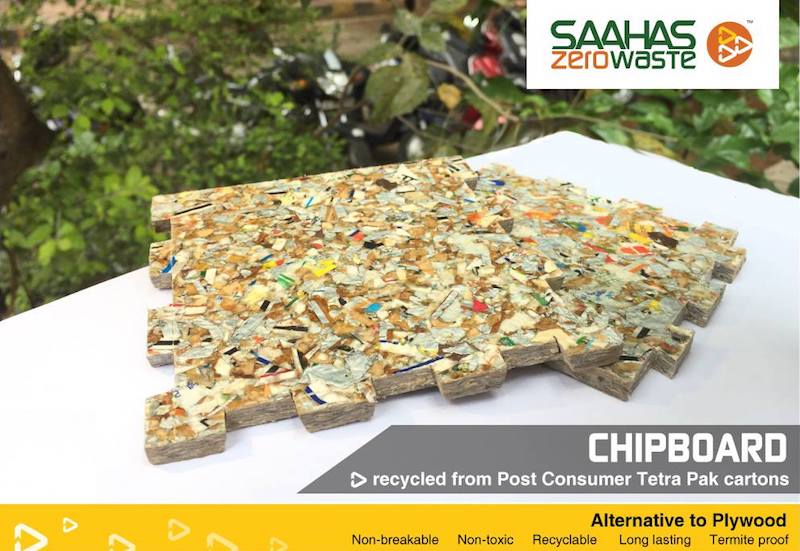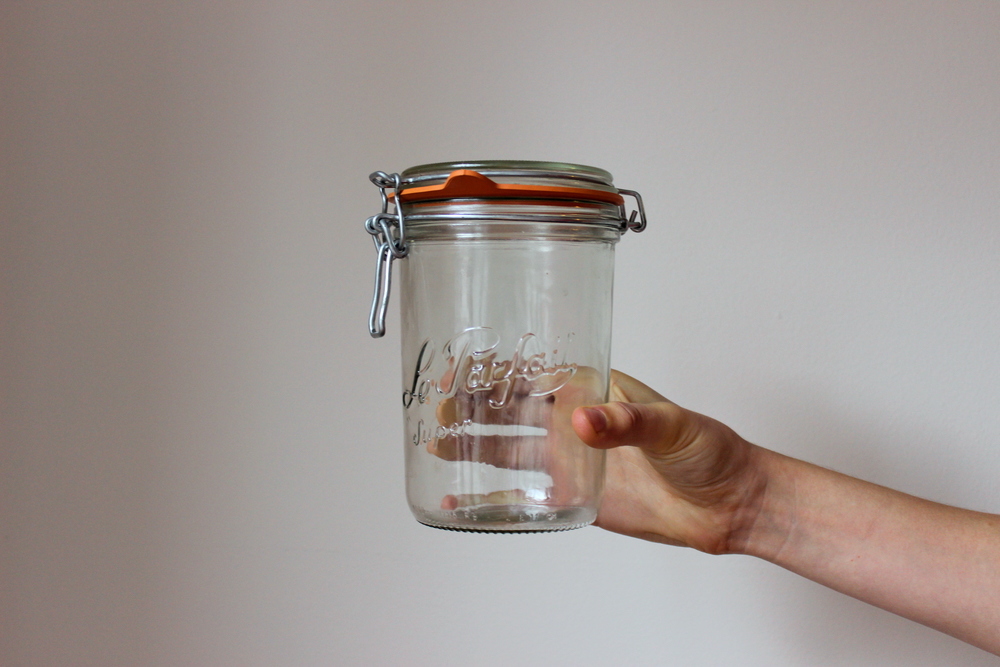In Conversation With Wilma Rodrigues Of Saahas Zero Waste

In September 2017, Wilma Rodrigues, Founder and CEO of Bengaluru-based waste management company Saahas Zero Waste won the Waislitz Global Citizen Award - an annual award that recognises the excellence of one individual in the work to end extreme poverty.
Saahas was started as an NGO in 2001 to act upon a set of progressive municipal solid waste management rules that sought to send less waste to landfills through decentralised handling. In the decade that followed, it worked closely with citizens to raise awareness on better waste management at source, and with the Environment Ministry to draft what is now India’s e-waste policy. In 2013, the NGO relaunched in a new avatar - a social enterprise that provided waste management solutions for urban solid waste.
Today, the company manages 25 tons of urban solid waste in Bengaluru. To bulk generators it provides end-to-end services - awareness, segregation, collection - and also manages a waste processing unit installed in every apartment complex, institution or tech park to make them zero-waste spaces. It also partners with the government to collect segregated waste from individual households and small commercial establishments and process it in its centres in the city.
Over the years, Saahas has come to be closely associated with promoting circular economy principles in waste management by advocating managing waste at source and maximum resource recovery and recycling. We spoke to Wilma about the award and her plans for making the circular economy a reality in India.
Saahas staff segregates waste at a 10K marathon in Bengaluru. Source: Facebook.com/saahas
What does winning the Waislitz Global Citizen Award 2017 mean for you and how will it help take your work forward?
The acknowledgement of the Saahas Zero Waste business model makes me feel really good and motivated. It actually recognises how we, through our business, can address not just environmental issues but also poverty by providing dignified livelihoods for individuals from low economic households. I believe this recognition will help us expand our operations. In India, while we talk a lot about our GDP growth, as far as HDI goes, we are 133rd as the recent data on India’s hunger index also reinforces. As an organisation that works with people at the BOP, the award has made me think about how to track the improvements we are making in the lives of people working with us, and go beyond minimum wages. We also want to continue to provide alternative jobs to young professionals and keep them motivated so they can engage with India’s development narrative.
What does the circular economy mean to you?
In waste management, circular economy is about managing waste as close to the source as possible as well as maximum recovery of materials that then get reused in manufacturing and return to the mainstream economy in a closed loop system.
Wet waste management at Saahas Source: facebook.com/saahas
What is the potential for such a business model in emerging economies?
India is well placed to demonstrate resource recovery up to 90 percent, especially as the quantities of waste we are handling increase. Given the amount of land, technological innovation and human capital we have today, we could work towards being a role model for other South Asian countries in adapting circular economy principles to waste management while improving our social indicators. It’s all about looking at our waste as resource. For instance, in this season, we have lots of falling dry leaves. So many livelihood opportunities can be created from leaf collection and mulching, and poor women can earn minimum wage from doing this.
You work closely with businesses for better enforcement of EPR laws. What is the state of adoption of EPR laws in the country today?
Currently, India has EPR policies for e-waste and plastic packaging waste whereby all producers of electronics and plastic are responsible for setting up reverse logistics to take back the used products or packaging material and ensure its safe recycling by authorised recyclers. There has been a fair level of acceptance of EPR norms by the electronics industry although much remains to be done. About 95 percent of e-waste in India is recycled by the informal sector without access to safe disposal or recycling techniques due to which risk of environmental contamination by heavy metals is high.
Among plastic manufacturers, there is still no system for collection and processing of post-consumer plastic packaging waste, especially multi-layered packaging or laminates that are a mix of plastics and aluminium foil. These are non-recyclable and are currently what we see burning in piles or polluting our soil and water bodies.
Dry waste segregarted by Saahas staff Source: facebook.com/saahas
Does this mean this waste has no destination?
By design, these mixed materials are non-recyclable. So, yes, they go to landfills. But, the Plastic Waste Management Rules 2016 recommend that this waste be sent to cement kilns which have invested a lot to be able to use it as alternative fuel or Refuse Derived Fuel (RDF). However, since these kilns are located on the outskirts of the city and transportation cost are a huge hindrance, we have partnered with them to make this feasible.
What are the obstacles to better EPR adherence?
Today, the operational cost of raising public awareness about waste segregation, retrieving material from consumers, sending it to a recycler or having it collected by specialist collection partners, and paying for it to be recycled is far more than the revenue businesses earn for the recycled material. Not many companies want to bear this cost of collection and remanufacture because they feel it is not part of their core business and will instead impact bottom lines. They feel it goes against the government’s ‘ease of business’ promise. It will also mean having to interact with a vast network of informal waste collectors and recyclers which can be a daunting task for the industry. The other challenge is that there is just not enough information out there about companies’ recycling practices and spends and many of them get away with either very poor quality recycling facilities or none at all. In fact, there are instances of e-commerce giants, major FMCG companies, and e-waste producers ignoring notices from the National Green Tribunal regarding their non-compliance with EPR policies. We need more mainstream media investigating these stories as well as stricter enforcement of EPR laws by the government.
As consumers, we have to be comfortable with the idea of paying a premium for recycled goods in order to make resource recovery feasible for businesses. Today, consumers are ok to pay more for the luxury of drinking milk packaged in Tetra Pak but if a recycling fee is charged, they might not be willing to pay it. Once we are ok to pay for eco-friendly alternatives, businesses will have an incentive to invest in them and they will become more widely available.
Poly-Al Roofing sheets made of recycled post-consumer Tetra Pak cartons. Source: facebook.com/saahas
If there’s no economic value to businesses from moving to a closed loop economy model, why should they do it?
There's no value yet, and it’s important for businesses to come to terms with the fact that recycling might not always represent economic value. Today, the slogan ‘wealth out of waste’, to companies unfortunately means, ‘I’m giving you my waste, you give me money.’ But the social value they generate by creating jobs at all levels and improving health and quality of life is significant enough to justify the investment.
Until the focus shifts towards designing out waste, we have to make do with recycling. What is the status of recycling in India?
In the dry waste spectrum, only 30 percent of it is of good quality and offers some economic value: newspapers, milk sachets, cardboard cartons and PET bottles are all easily recyclable. But 70 percent is low grade material such as laminates, plastic bags and low grade paper packaging for which the economics is poor. This waste doesn’t even go to dumpsite, it ends up being burnt in roadside piles. In case of food waste, in Bengaluru, unless bulk generators work with empanelled vendors, food waste, if not not composted or used for biogas, will go to a piggery, since many are not ready to invest in waste management infrastructure.
The food waste is mixed, often stored for up to 48 hours before it reaches the piggeries, during which it is not heated or sterilised, resulting in spoilage especially in summer. Rotten food fed to the animals makes the meat very unsafe for human consumption. But, requiring vendors to have hygienic standards will cost pig farmers more. So, it’s all a question of the economics of waste management infrastructure.
How big a role is technology playing in faster adoption of circular economy principles?
In waste management in developed countries, waste sorting and resource recovery are already automated. In India, planned adoption of technology has been slow. At Saahas, our motto is ‘Nature, People, Technology’ and being technology centric has improved our operational efficiency and helped us streamline various processes. Today, it takes 9 people to handle a ton of waste and we are using technology to reduce that to 3 so as to cut down manual handling of waste. But we must be careful with the way tech is designed and what sort of problems it is applied to, or else we will end up with solutions like compostable plastic that does not decompose fully and leaches toxins into the environment. Or like Singapore, which appears clean because all its waste is burnt. Technology solutions need not be expensive. In India, indigenous innovations such as organic waste converters are examples of appropriate technology suited to manage at source the kind of waste we generate.
Source: Facebook.com/saahas
What is the feasibility of waste to energy conversion as a solution to India’s waste?
Waste to energy plants need to be thought of a last resort to deal with residual waste - the 20 percent of the our waste that has no destination or further use. Even this waste can be avoided by using reusable diapers and menstrual products. Today, in the rush for cleanliness, everybody is promoting waste to energy conversion because it appears to be an easier, quicker solution than implementing segregation, collection, management at source and recycling which demand more effort. By following Western models and promoting it as the first solution for all types of waste, India is overlooking more efficient and urgent methods without accounting for the environmental cost of the emissions from these plants. Their impacts are as detrimental as that of landfills unless emission control measures are installed. At Saahas, we will only recommend and design our own waste to energy plants once all other waste management infrastructure is in place.
What are some of the challenges Saahas is facing today?
We manage 25 tons of waste today and we hope to manage 300+ tons across various Indian cities soon. Our challenge is to prove that what we are doing today is not just a pilot and to reach a point where there is conviction among all stakeholders that this could be a model that is strong enough to be implemented on a large scale to manage all the waste a city generates.
What can we expect from Saahas in the future?
We have helped many large apartment complexes and tech parks become zero waste spaces and hope to scale up our operations with bulk generators and the government to manage waste better and ensure maximum resource recovery. We are also excited about overseas opportunities. Ultimately, our aim is to create positive environmental and social impact by creating plenty of livelihoods opportunities for the poor in making the circular economy a reality in India. What we’d like to see is a greater contribution by industry and business as part of their CSR in materials R&D, technology and talent to build the capacities of waste management enterprises.










